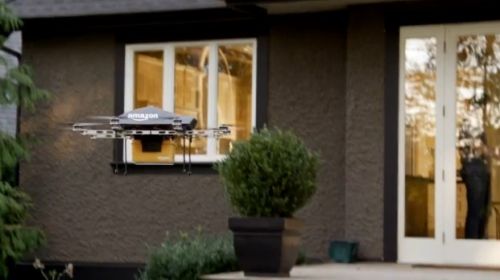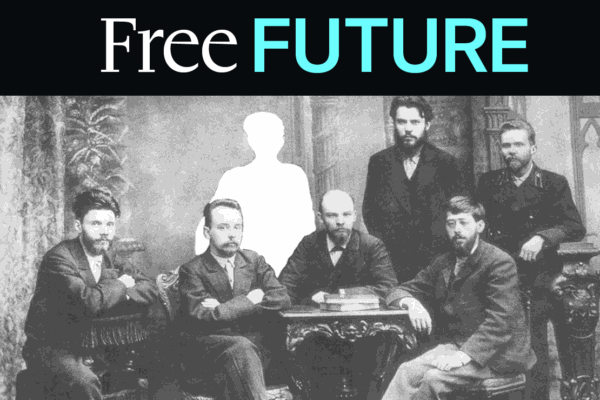
Amazon attracted a lot of attention this weekend when, on “60 Minutes,” CEO Jeff Bezos announced a futuristic vision for the company: using drones to make deliveries within 30 minutes to homes in metropolitan areas.
The biggest import of the story is just the fact that Amazon has decided that it’s interested in this technology. That will have a couple of effects. First, it makes drones all the more real for people. The company’s video illustrating how the system is envisioned as working—viewed by millions on “60 Minutes”—should not be underestimated in its cultural effects. There’s nothing like putting a concrete vision out there to make something happen. There’s also nothing like having a powerful, household-name company get behind a political cause to make it happen. All manner of aerospace companies have been pushing for the integration of drones into the national airspace, but now a company that many Americans have a direct relationship with is involved. And (as my colleague Chris Calabrese points out), daily adoption of the technology by a company like Amazon would also likely smooth the way for drone deployments overall just by making it cheaper and more ubiquitous.


%3Ciframe%20allowfullscreen%3D%22%22%20frameborder%3D%220%22%20height%3D%22281%22%20src%3D%22%2F%2Fwww.youtube.com%2Fembed%2F98BIu9dpwHU%3Fautoplay%3D1%26autoplay%3D1%26version%3D3%22%20width%3D%22500%22%3E%3C%2Fiframe%3E
Privacy statement. This embed will serve content from youtube.com.
We presume that Amazon is interested in delivery, not surveillance, and that it wouldn’t be retaining or even capturing video from its delivery vehicles. Nonetheless, others will, and it is in everyone’s interest to pin down solid drone privacy protections now, so that companies like Amazon can experiment with deployments that could prove useful for us all.
One other point: Bezos acknowledges that this use of drones is not “around the corner,” but everyone should be clear on just how far away it probably is. Congress has given the FAA a date of 2015 to “integrate unmanned aircraft into the national airspace system.” But “integration” of drones does not necessarily mean they could be used in anything like the manner Bezos envisions. Currently, government agencies deploying drones must comply with conditions that include: below 400 feet in altitude, line-of-sight only, during daylight hours only, not over densely populated areas, with a spotter present in addition to a pilot, and with both of those operators possessing certain certifications. Drones could presumably be “integrated” with many of these conditions remaining in force.
Of course those conditions could all be lifted as technology and safety permits. The biggest obstacles are the ban on operation of drones over densely populated areas (which would prevent Amazon from taking advantage of the population densities probably needed to make the scheme work), and the requirement that each drone have a pilot. Having followed drones and attended drone conferences for several years, my sense is that for the FAA and the aviation world in general, allowing autonomous (as opposed to ground-piloted) drones would be a huge step. The biggest obstacle is the need for “sense and avoid” capability—the simple ability, possessed by all human pilots, to see other aircraft (not to mention things like towers and mountains) and steer around them properly. Creating a capability to reliably sense and avoid (also known as “Detect and Avoid” or DAA) requires very smart and robust technology.
That said, standards bodies are already at work on these problems, and while it’s not clear how vigorously Amazon will push for its vision, its weight may now be added to that of all the other industry forces hoping to take to the unmanned skies. Let’s hope that the company will see clearly that the fate of this technology is inextricably tied to the privacy questions that surround it, and help us push to lay those questions to rest.



